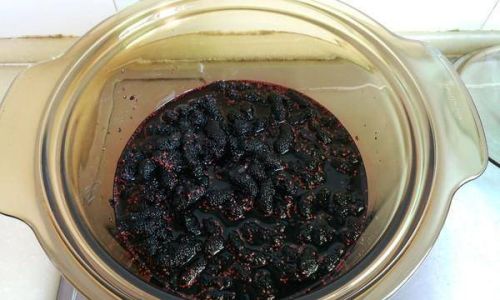Table of content
Introduction
Mulberries, known scientifically as Morus species, are a fruit that boasts a rich history and cultural significance across various regions, particularly in Asia. Their sweet, juicy flesh and vibrant color make them a delightful addition to any diet. However, like many fruits, mulberries are perishable and require proper storage to maintain their freshness and nutritional value. One common question among mulberry enthusiasts is whether these delicate fruits can be stored in the refrigerator to prolong their shelf life. This article delves into the intricacies of storing mulberries in the refrigerator, exploring the pros and cons, the ideal conditions, and alternative storage methods.
Understanding Mulberry Storage Needs
Before discussing whether mulberries can be refrigerated, it’s crucial to understand their basic storage needs. Mulberries are highly susceptible to bruising and moisture loss, which can quickly lead to spoilage. They thrive in cool, humid environments but are sensitive to temperature fluctuations and direct cold exposure, which can damage their cell structure and alter their taste.
The ideal storage temperature for mulberries lies between 32°F to 41°F (0°C to 5°C), with a relative humidity of around 90-95%. This range helps to slow down the ripening process and minimize moisture loss, thereby preserving the fruit’s quality for longer periods.
Refrigeration: A Viable Option?
Yes, mulberries can indeed be stored in the refrigerator, but there are specific guidelines to follow to ensure optimal preservation. Here’s a comprehensive guide on how to refrigerate mulberries effectively:

Preparation Before Refrigeration
-
Selection and Sorting: Begin by selecting only ripe, unblemished mulberries. Sort through the batch, discarding any fruits that are moldy, bruised, or overly ripe. This step is crucial as damaged fruits can quickly spread decay to others.
-
Cleaning: Gently rinse the mulberries under cold running water. Avoid soaking them as this can increase the risk of moisture-related spoilage. Pat them dry using a soft cloth or paper towels to remove excess water.
-
Packaging: Store the cleaned mulberries in an airtight container lined with a paper towel to absorb any excess moisture. Alternatively, you can use plastic bags, but ensure they are not sealed tightly to allow for some air circulation.
Refrigeration Techniques
-
Temperature Control: Place the container or bag in the crisper drawer of your refrigerator, which typically maintains a more consistent temperature and humidity level compared to other parts of the fridge.
-
Avoiding Direct Cold Exposure: Do not place mulberries directly on the refrigerator shelves or in the freezer compartment, as direct cold can cause them to freeze and develop an off-taste.
-
Monitoring: Check the mulberries periodically for signs of spoilage, such as mold or discoloration. Remove any affected fruits immediately to prevent the spread of decay.
Shelf Life in the Refrigerator
Properly stored mulberries can last up to a week in the refrigerator. However, their quality will gradually decline over time, with a noticeable loss in firmness and flavor. Therefore, it’s best to consume them within the first few days for the best taste and texture.

Pros and Cons of Refrigeration
Pros
- Extended Shelf Life: Refrigeration significantly extends the shelf life of mulberries, allowing you to enjoy them longer.
- Maintains Freshness: The cool temperatures slow down the ripening and spoilage processes, preserving the fruit’s fresh appearance and taste.
- Convenience: Refrigeration is a convenient method that requires minimal effort and equipment.
Cons
- Texture Change: Refrigeration can alter the texture of mulberries, making them softer and less firm.
- Flavor Alteration: Over time, the sweet, juicy flavor of mulberries may diminish slightly when stored in the refrigerator.
- Risk of Condensation: If mulberries are not properly dried before refrigeration, condensation can form inside the container, increasing the risk of mold.
Alternative Storage Methods
While refrigeration is a popular choice, it’s not the only way to store mulberries. Here are some alternative methods to consider:
Freezing
For longer-term storage, freezing mulberries is an effective option. Wash and dry the fruits, then place them in a single layer on a baking sheet lined with parchment paper. Freeze until solid, then transfer to an airtight container or freezer bag. Frozen mulberries can be used in smoothies, baking, or cooked dishes, though their texture will be softer once thawed.
Drying
Dried mulberries offer a concentrated sweetness and can be stored at room temperature for several months. Use a food dehydrator or oven set to a low temperature (around 140°F or 60°C) to dry the fruits until they are pliable but not brittle. Store dried mulberries in an airtight container in a cool, dark place.
Canning and Jam Making
Preserving mulberries through canning or making jam allows you to enjoy their flavor year-round. Canning involves packing the fruits in a syrup and processing them in a hot water bath, while making jam involves cooking mulberries with sugar and pectin until they reach a thick, spreadable consistency. Both methods require proper sealing and storage to prevent spoilage.
Conclusion
In conclusion, refrigerating mulberries is a viable option for preserving their freshness and extending their shelf life. However, it’s essential to follow proper preparation and storage guidelines to avoid texture and flavor alterations. Alternative methods such as freezing, drying, and canning offer additional options for those looking to enjoy mulberries beyond their short seasonal availability. Ultimately, the best storage method depends on your personal preferences, the intended use of the mulberries, and the length of time you wish to store them. By understanding the nuances of each storage technique, you can ensure that your mulberries remain delicious and nutritious for as long as possible.





0 comments